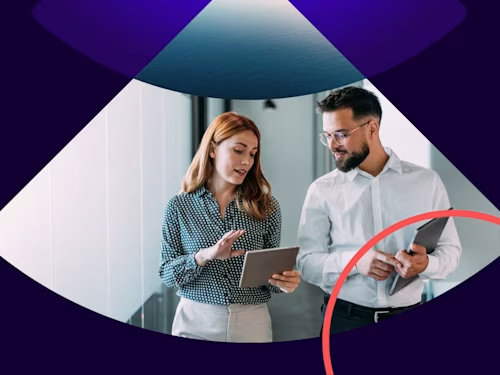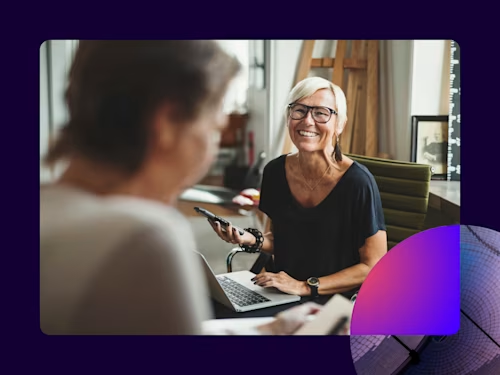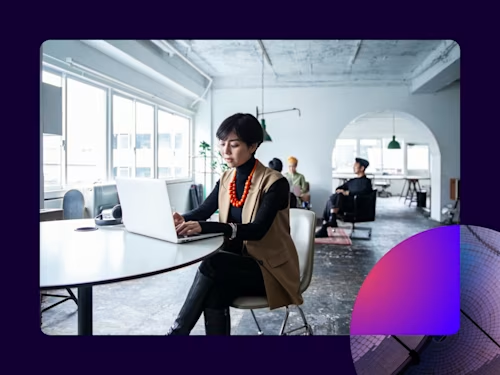
How AI is Enabling Intelligent Agreements
In the coming decade, generative AI will transform every aspect of our lives, especially the way we create, understand and manage agreements.

"
In the coming decade, generative AI will transform every aspect of our lives, especially the way we create, understand and manage agreements.
In the coming decade, generative AI will transform every aspect of our lives, especially the way we create, understand and manage electronic agreements. Digitisation is redefining what agreements look like, how we codify trust in agreements and even evolving what constitutes an agreement.
The transformation began a few years ago, as AI has already started helping to make parts of the agreement workflow smarter, easier and more trusted. But everything we've done so far is only a warm-up for the huge leap that's coming next.
To explain what we envision, let me begin with a metaphor—about maps. Not so long ago, maps were big, bulky pieces of paper that you folded up and kept in your car's glove box. Then came MapQuest, which could chart a course and give you directions, which was great, but for the most part it was just a digital replica of the paper map and you still had to print it out.
The next breakthrough came with Waze and Google Maps, which can speak to you with real-time live data, spot traffic ahead, change your route on the fly and tell you which restaurants are close to the next exit. Essentially, you have a map that can think, act and communicate. Now Google has gone further by making Google Maps immersive, delivering photorealistic experiences that enable you to zoom through a location and even experience a route you'd like to take before you set out. In a sense, it's changed our perception and expectation of a map—they're something new. Sure, they handle everything that traditional maps can do, but they also do more. Essentially, you've created a new definition of what we think of as a "map."
Agreements—defined as a promise between two or more people or organisations—are following a similar evolutionary curve. We have gone from paper to PDFs and now to applying AI at various stages of the agreement process. Ultimately we are headed toward a world where agreements are made of computable code, and can think, act, communicate and even make decisions autonomously.
Once that happens, you can unlock all the powerful data and metadata in agreements, things like the identities of the parties, terms and conditions, start and end dates, and so on. Then we can apply artificial intelligence to analyse and interpret that data to extract meaning, offer insights and help you make better decisions. We can search and discover in natural language across a repository of agreements.
Furthermore, we can connect agreements and enable them to perform tasks autonomously. For example, think of a travel insurance policy that knows when a customer's flight is cancelled and automatically pays the claim without any human intervention. The customer is spared the hassle of calling the insurance company and talking to a claims representative. The insurer delights customers by delivering an experience that feels like magic.
The possibilities go far beyond that. Once we turn flat, static documents into rich, dynamic, multidimensional agreements, we can just keep evolving the technology, creating new functionality. Ultimately you create a new definition of what constitutes an agreement.
Meanwhile, with these new systems, agreements get done more quickly, at lower cost and with less risk. In short, the whole world starts moving faster. We will feel the impact in every aspect of our lives. Imagine a world where opening a bank account takes a few minutes—instead of half a day. Insurance claims get processed and paid automatically—instead of getting bogged down or even lost in an impossibly tangled thicket of manual hand-offs. Smart supply chains can adapt on the fly and anticipate demand—putting the right products in the right place at the right time. Life-saving drugs come to market faster.
That's the world that Docusign and our customers are building. And some of it is arriving a lot sooner than you might think.
For example, we have introduced a biometric identity verification app that matches a customer's face to the photo on their ID. In just a few seconds, AI image recognition software analyses the two images to determine whether they match. It's the equivalent of a face-to-face meeting, but it takes place virtually, and the whole process is completed in a matter of minutes.
We're also introducing an AI-based system that can "read" an agreement, extract and "understand" its meaning, and give you a simple summary. Agreement Summarisation makes it easier to grasp the meaning of a document so you can make faster decisions.
Finally, we are creating generative AI systems that are unique to agreements. Systems like ChatGPT and Bard use publicly available Large Language Models, and we're using those, but we're also developing tuned language models that are specially designed for agreements, in other words, Agreement Language Models.
Better yet, we have been entrusted with the largest agreement-centric data set in the world, and with customer permissions and governance, we will train agreement language models to help our customers accelerate their digital business while minimising risk. To keep you in the loop and help you plan your own roadmaps, we've launched Docusign AI Labs, where you can get an early glimpse of what our AI teams are working on with change making customers.
We stand at the dawn of an amazing era, where AI will be applied to every product and every process, with outcomes that we cannot even imagine. Entire industries will be transformed, and new industries will be created. We're thrilled to be heading off on this journey in partnership with our customers. And we can't wait to see what's around the corner.
Join the waitlist for Docusign AI Labs.
Related posts
Docusign IAM is the agreement platform your business needs



